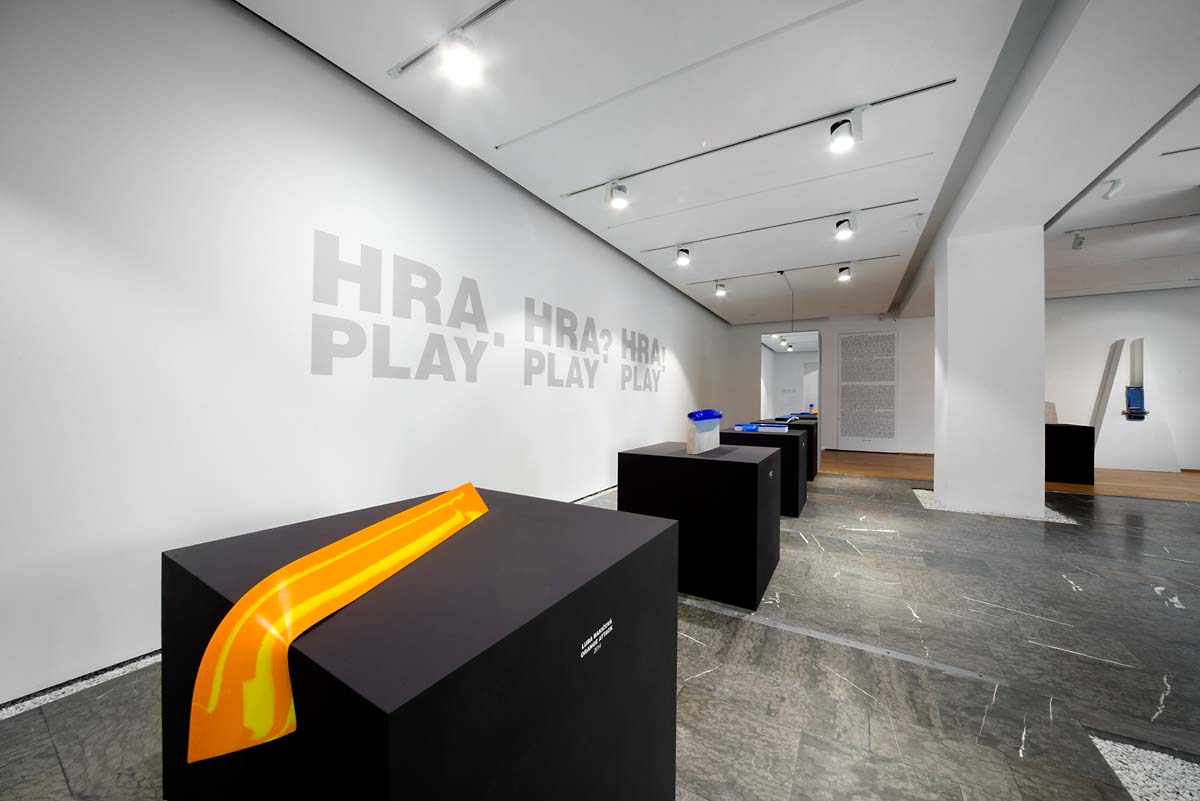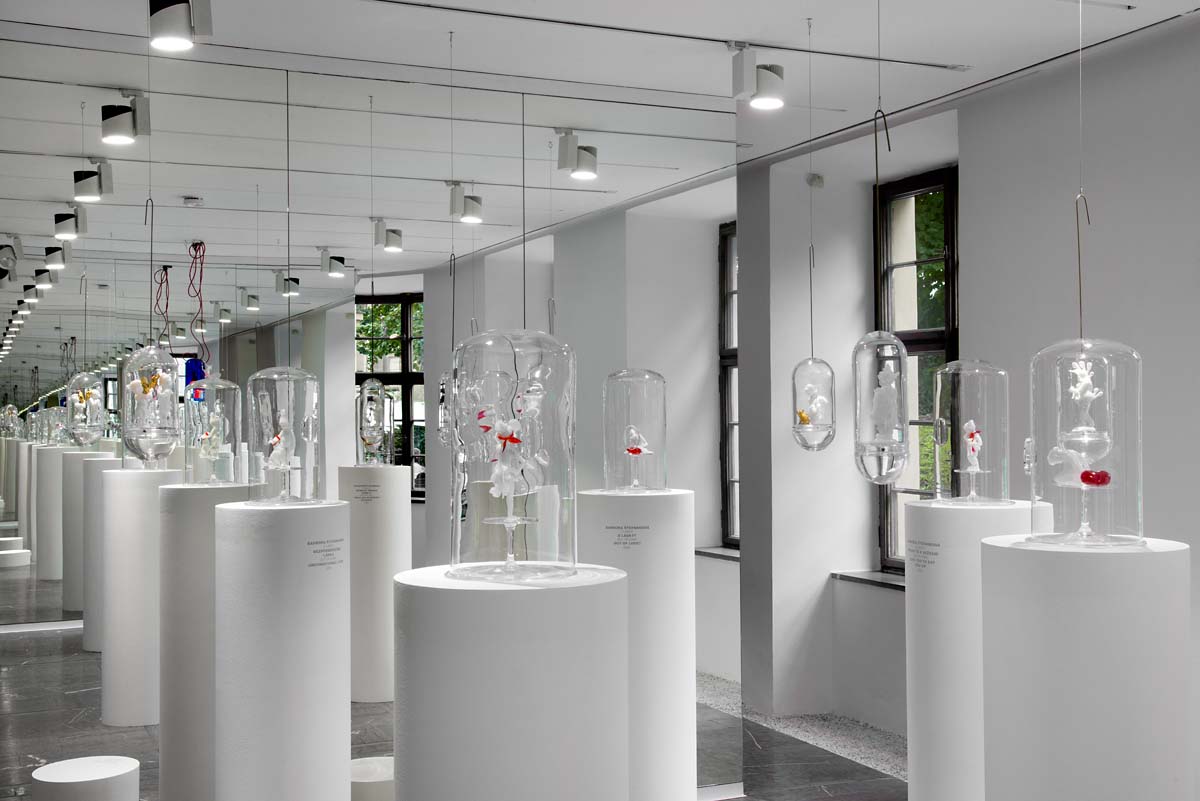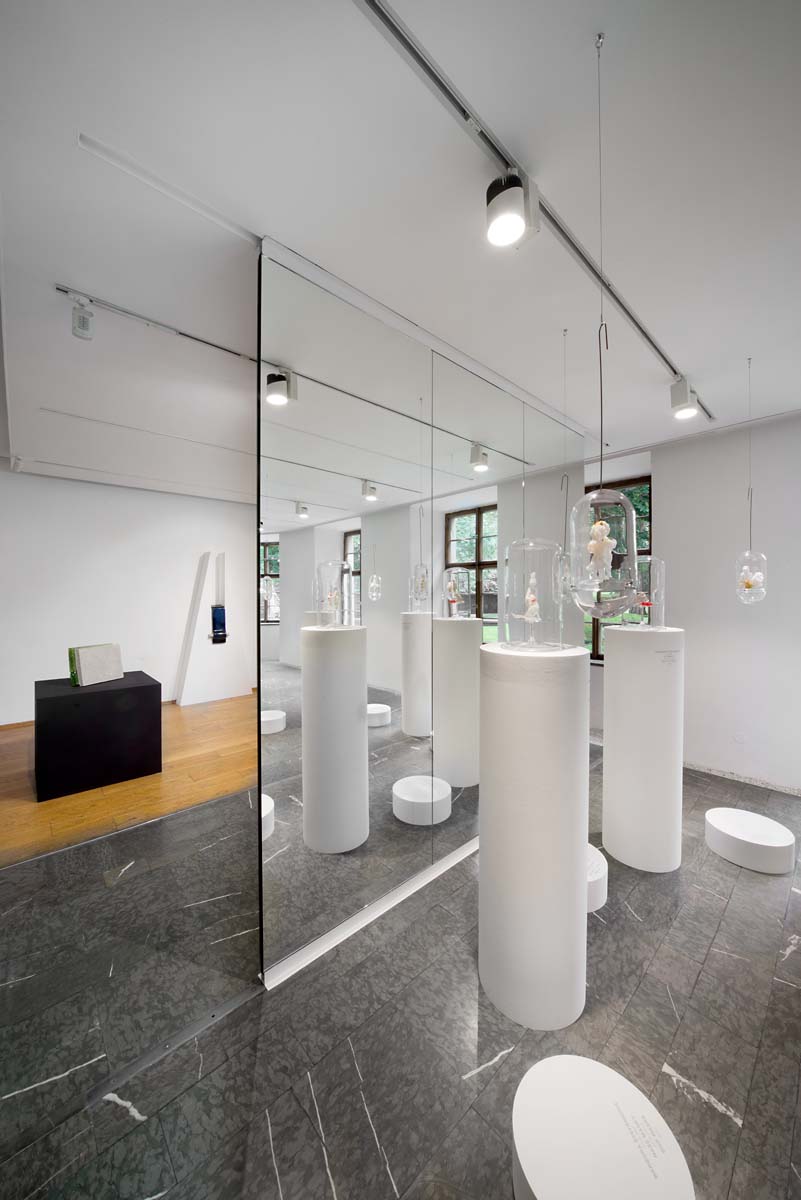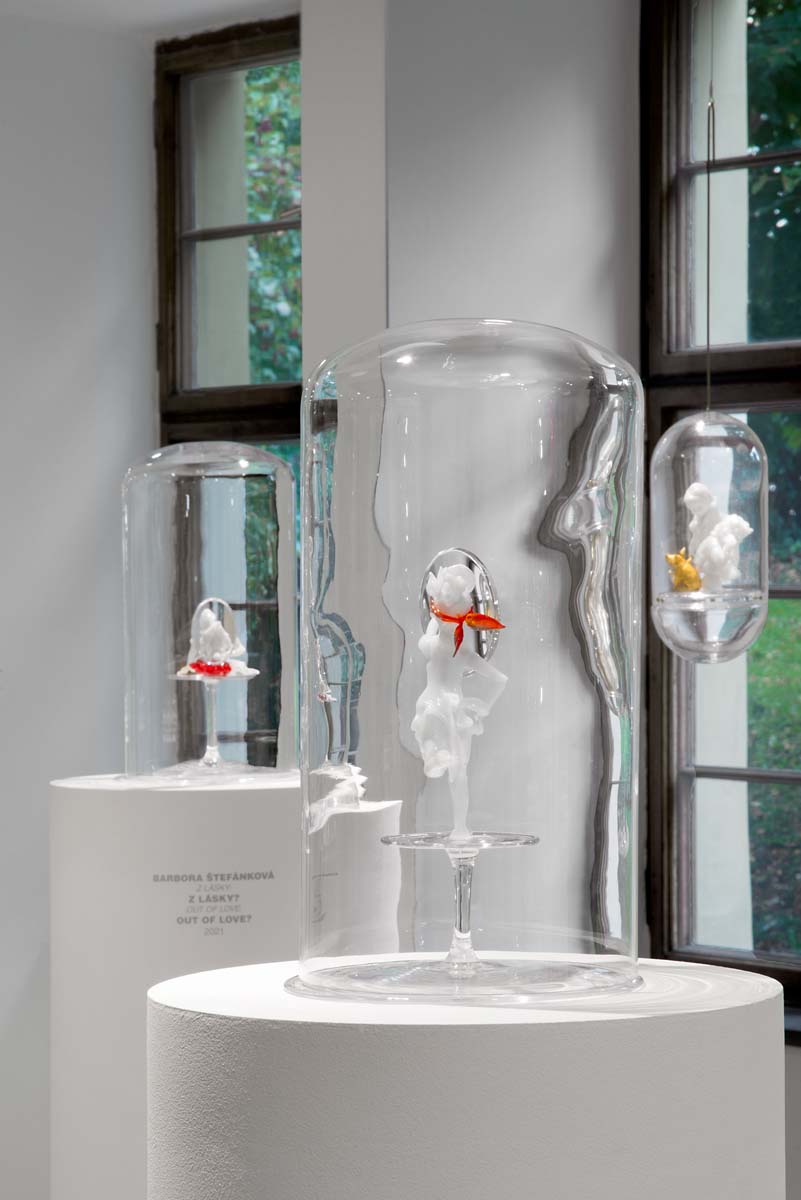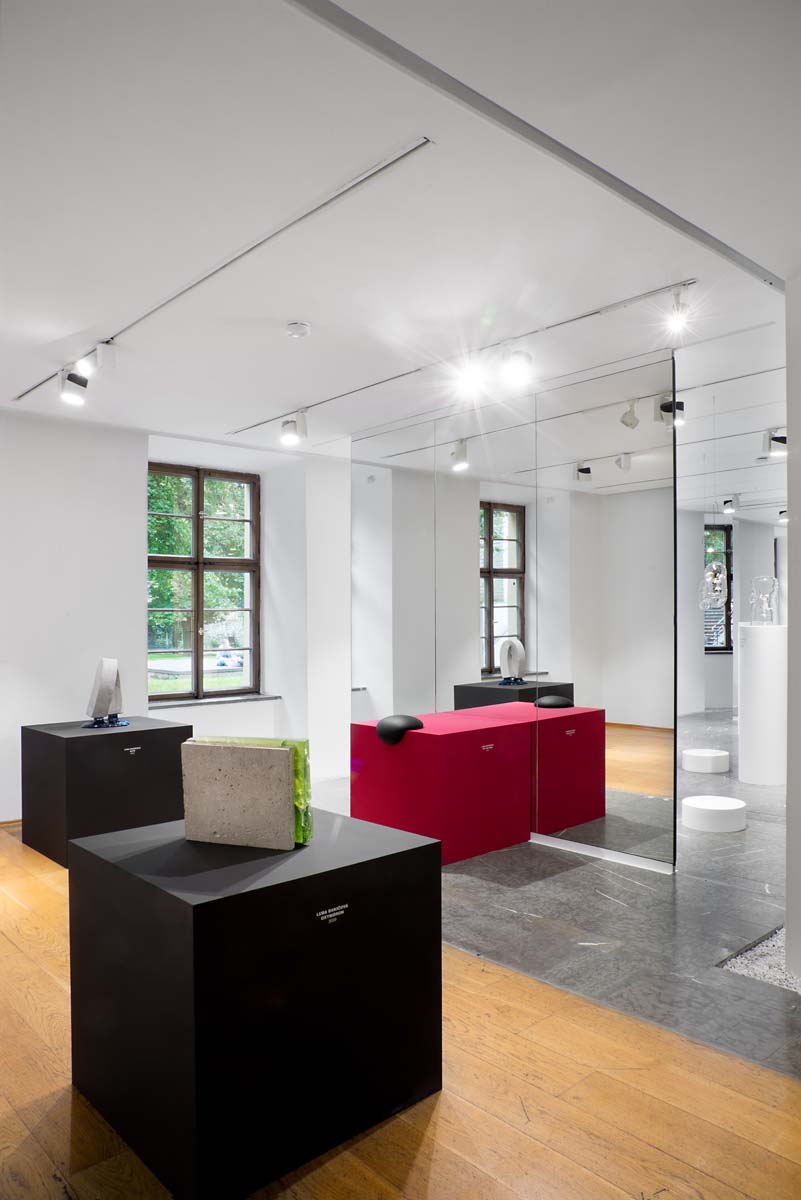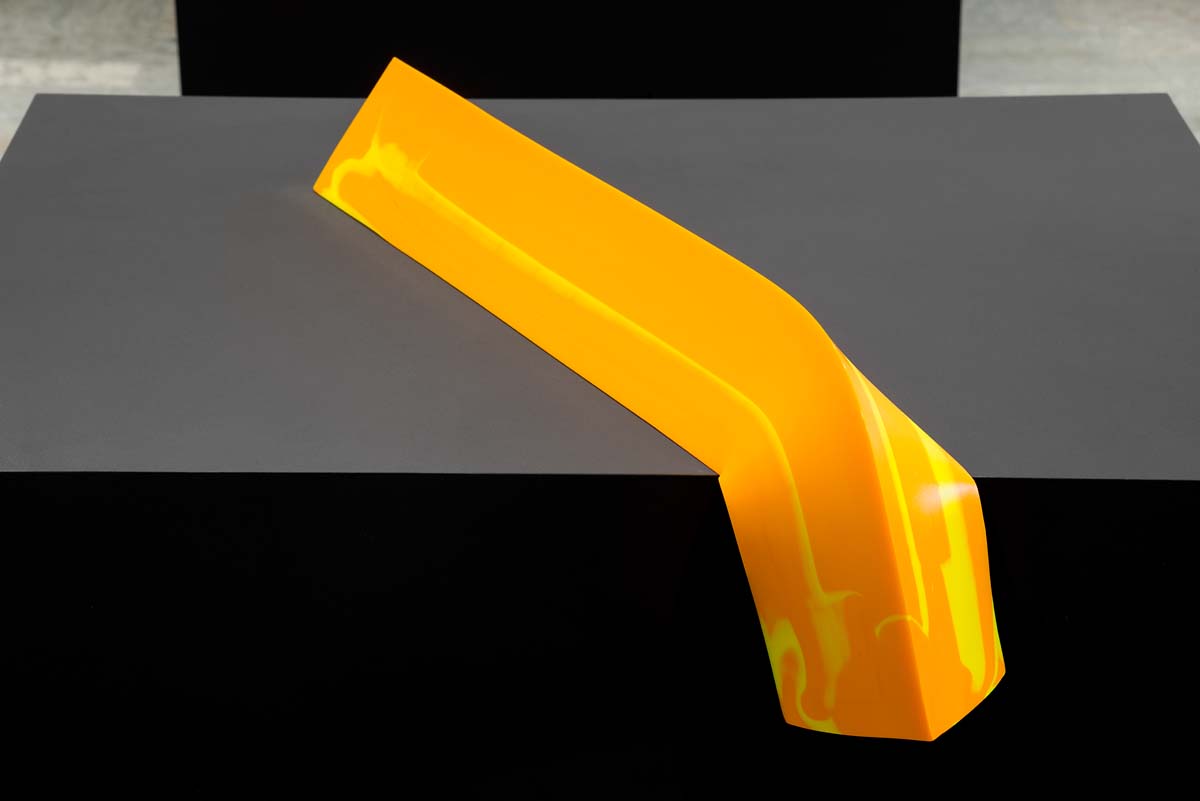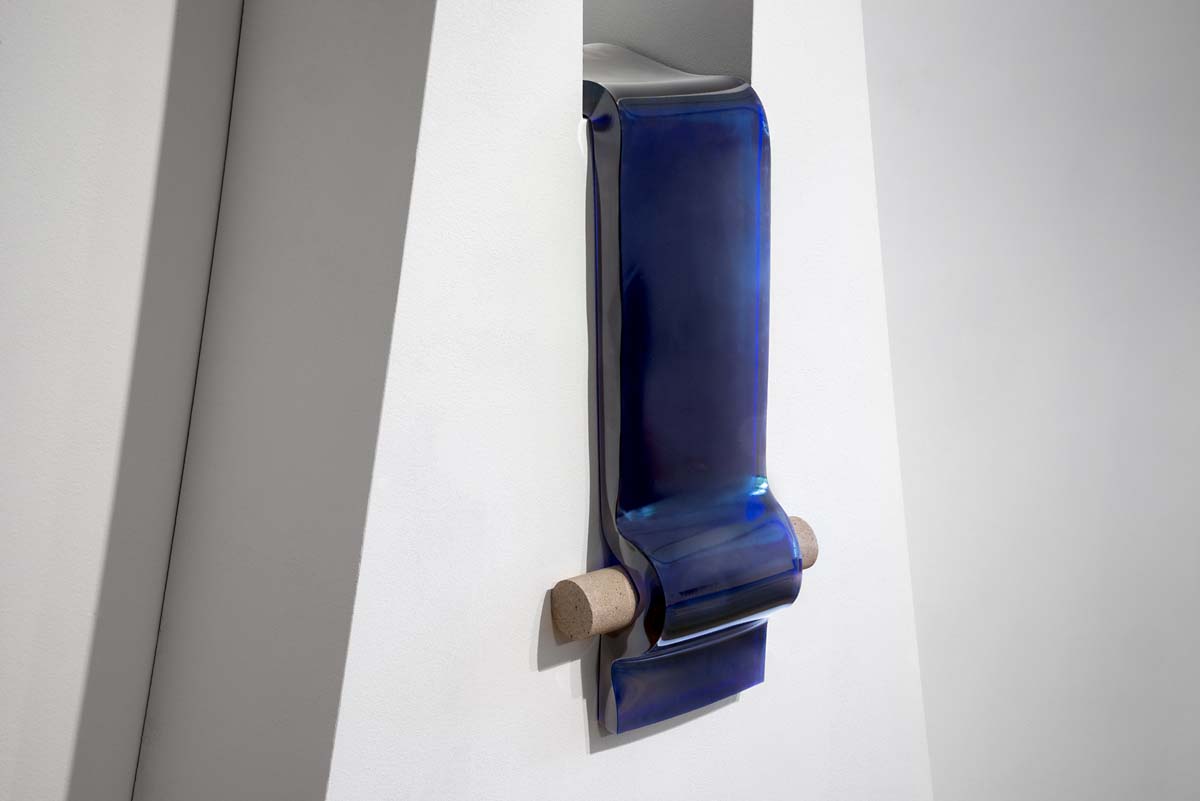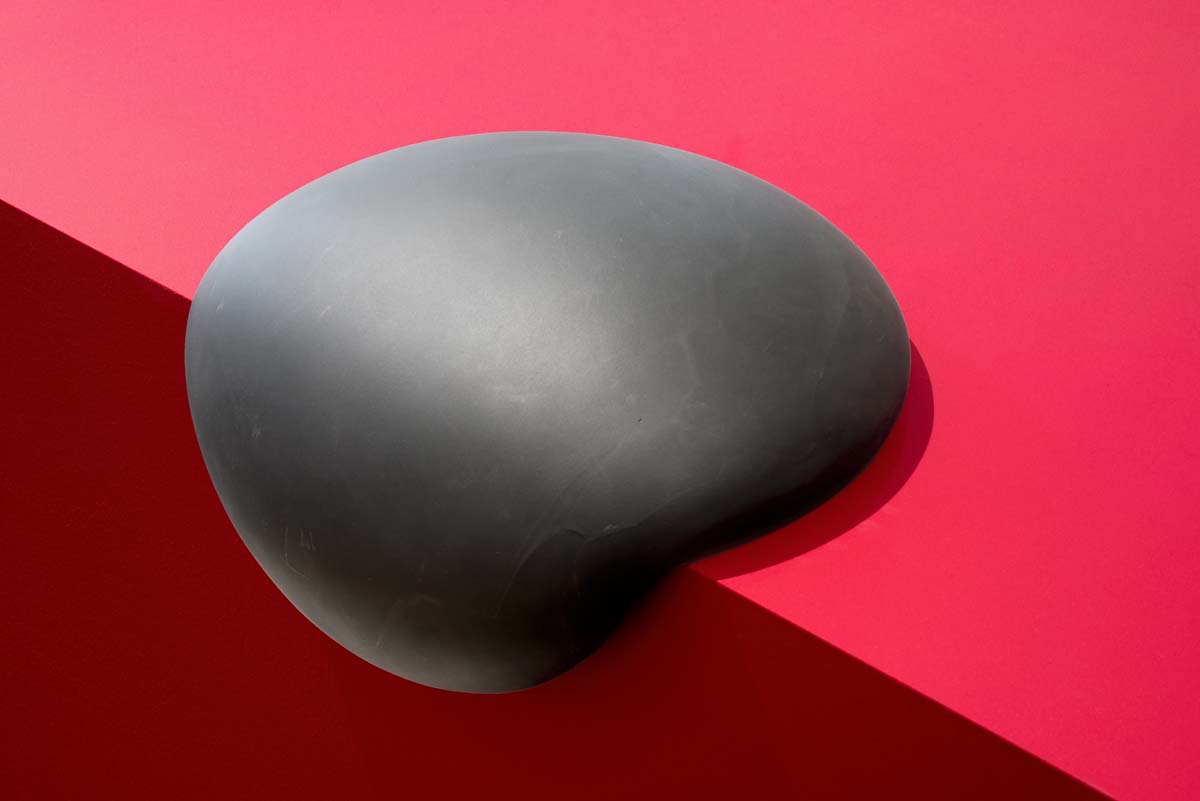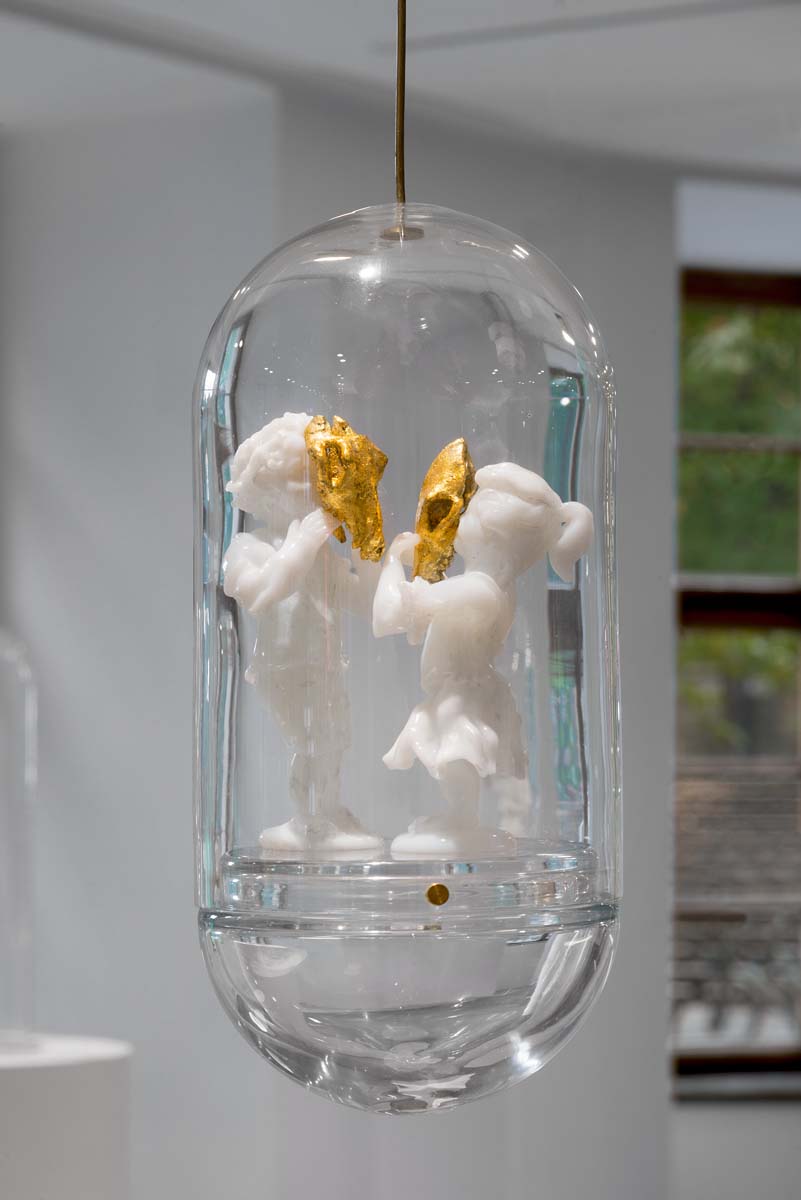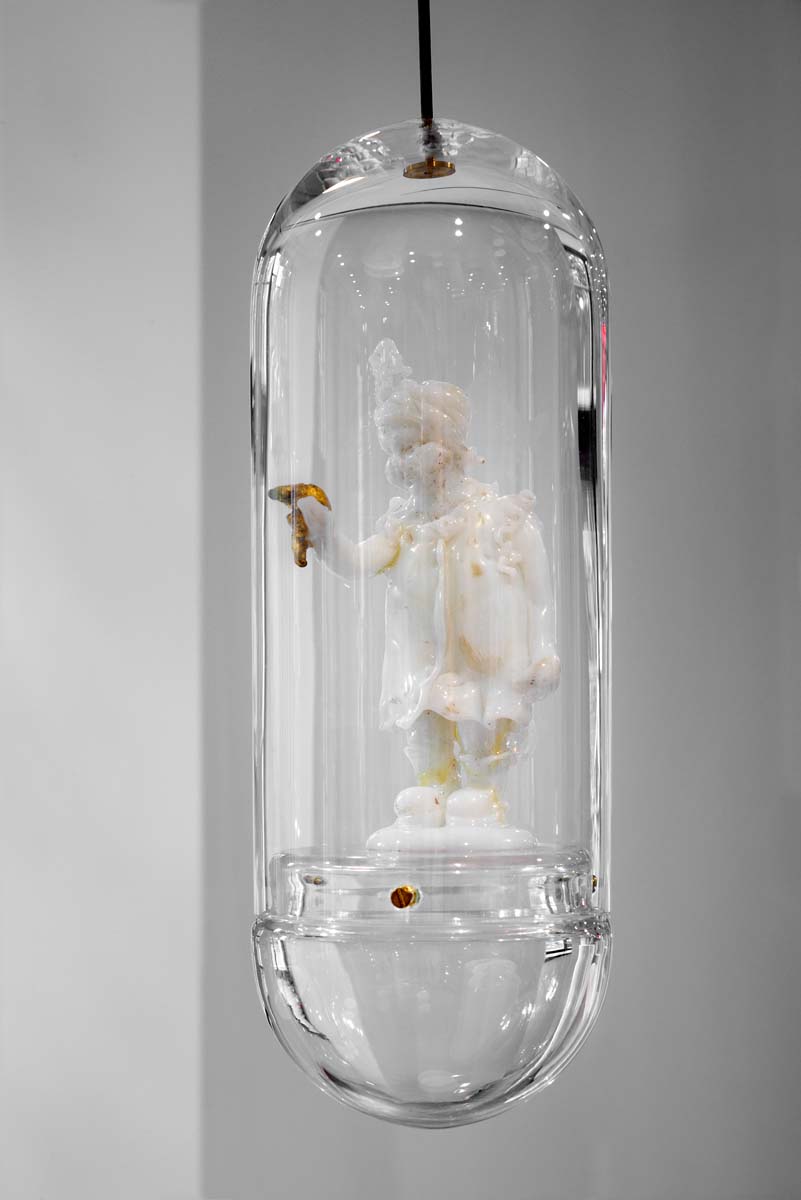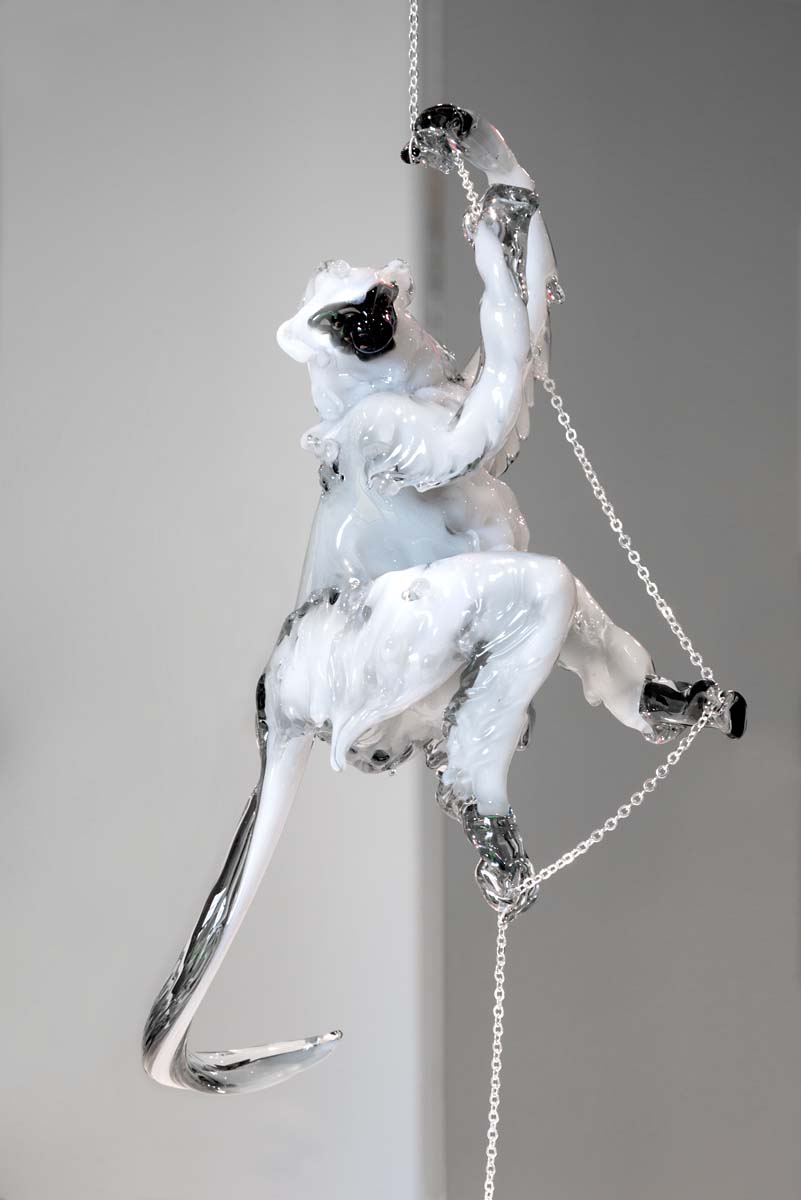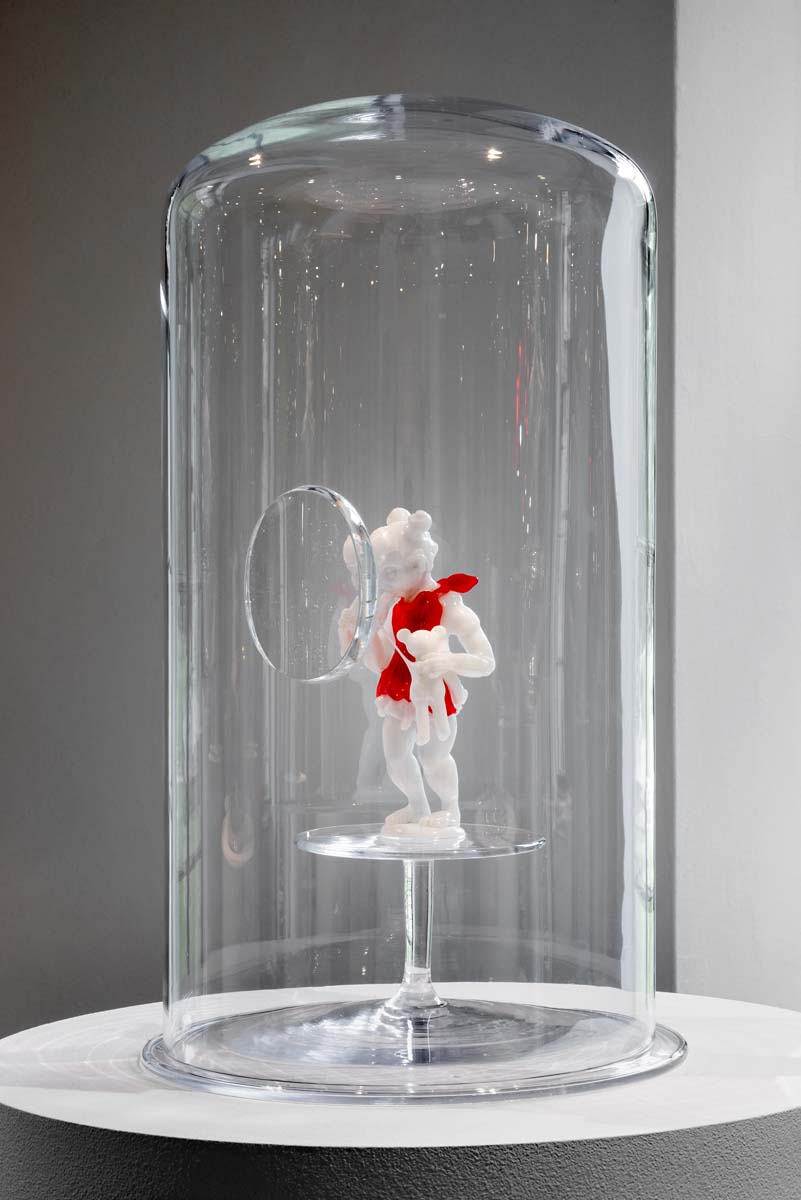Exhibition Hra. Hra? Hra! (Play. Play? Play!) presents a contrast of the works of the two present most compelling and professionally successful representatives of young authors’ original glass art in the Czech Republic.
In Luba Bakičová’s concept, “play” is nothing else but a synonym of creativeness and a symbol of invasions into systematic experimenting with the substance of glass. It is both technological and visual experimenting with its characteristic properties, such as hardness, fragility, transparency… Bakičová “is capable” of halting, in a way, the viscousness of hot glass, once cooled – that is, in solid form –, her artefacts still raise the impression of being viscous, even gelatinous. In other cases, the author combines glass even with elements of heat-resistant material, sometimes inaccurately called refractory concrete. The inclusion of concrete into the aesthetics of the impression of shapes was once already the subject of Brutalist architecture; from time to time concrete was included in presentation, when glass elements were inserted into it and concrete replaced a wall or a structural wall… So far, no approach to these combinations similar to that of Luba Bakičová has appeared. Both materials intermingle in a logical way in the composition, they frequently represent a contrast of the incompatible: she contrasts hardness against softness, she combines the sturdiness of the form with the “marmalade-like” property of flowing molten glass, she creates glass in the likeness of jelly, or even plastic. We may see these visual provocations in the contrast of the geometrizing body of a sculpture passing into melting glass at its bottom. Although it still seems to be a soft part of the object, it is but an optical illusion as this “degradation” in the furnace was masterfully stopped and the glass was cooled. This, too, is a play. At other times, Bakičová’s artefacts may look like a piece of soft jelly that somehow escaped the pressure of two blocks acting against each other, or it may, in the simple form of a “blob” or a block of “colourful agar”, flow over the edge of its base, sometimes even flowing around an element of refractory concrete on its way. Presently, melting has been the focus of hundreds of young glass artists all over the world, yet those were the “different” works of Luba Bakičová that were selected for the finals of prestigious international competition Young Glass 2017 in Ebeltoft, Denmark, and exhibited in the most famous glass art centres of Europe.
For Barbora Štefánková, play as manipulation of meanings and forms is the absolutely crucial base of her work. Despite coming from the family running a glass studio in Desná, it appears that Barbora Štefánková has no intentions to let the focus of her family business limit her in any way. Still, the opportunity to cooperate with her father, great master glassblower Martin Štefánek is a great advantage for her. His sense for the creative essence of the design and his craftsmanship in handling hot glass is so great that his share of the realization nears the level of co-authorship. He can emphatically feel and materialize his daughter’s ideas. Although Barbora Štefánková is also a great designer, she goes beyond the limits of the contemporary glass art in the area of free creation, opening it towards the second wave of Czech Postmodernism, in which, similarly to the first wave, “everything is allowed”. There are no limits; the richness of form, inspiration from other periods or transfers from other fields mean that layering more decorations, gold plating, glass domes (and thus more meanings) never ends. The author dwells on the boundary of crazy and merry plays and narrations as a “director” of scenic dramas with a little peculiar retro-figures of people, animals, or dolls. These are conspicuously reminiscent of colour-print figures of little girls and boys which we know as the brilliant kitsch in the last century view cards, magazines or advertisements. Štefánková enjoys using them to provoke, to guide us around them, diverting safely from kitsch, at least by restricting the colour of her artefacts. These are brilliantly crafted, entertaining, and in all aspects playful “masquerades” that are not just formally made, but based in the author’s private experiences, wishes, comments of current events, cultural experiences, or a little psychedelic, dreamy memories. They raise merriment; however, they also involve bleak personal emotions. In a way, they are also personal confessions which is why we can view the plays as delusional, yet also as non-delusional, because they are serious and nostalgic.
It is not only the material of glass which connects both authors, but also talent, international experience, and a positive reception of their work by both professional and lay audience. Both are dynamic and spontaneous personalities, we can feel creativity from their every realization that both of them develop in an entirely original way, also involving provocation, humour, and emotion. Creative work as a way of play is an ancient principle in artwork and it can have (and it does, in case of these two authors) various facets and limits. Play may be viewed as the ability to look at things without any burden, differently than it is usual. Thus, in both of them, we may see the affiliation to the classical “homo ludens”, transformed according to the contemporary thinking of the young generation and the environment of glass-making…

